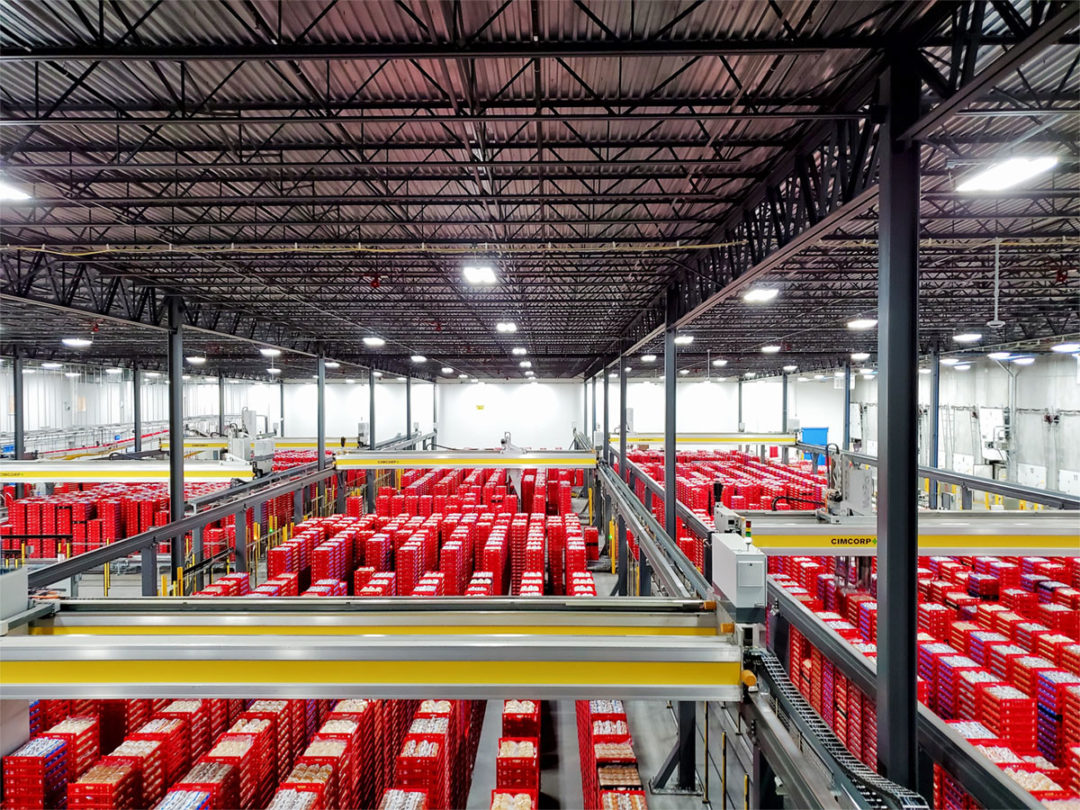Automating for quick turnaround
A robotic order picking system is helping convenience-store chain Kwik Trip seamlessly handle demand surges—including last year’s pandemic-driven order spikes.

A 2018 warehouse automation project is making good on its promise to give Midwest convenience-store chain Kwik Trip the flexibility to handle spikes in demand—something the coronavirus pandemic put in full focus a year ago.
The Wisconsin-based company automated the product handling and order fulfillment processes at its La Crosse, Wisconsin, baking facility with the help of material handling systems manufacturer and integrator Cimcorp, which designed a warehouse solution around its MultiPick robotic order picking system. Today, the system is helping Kwik Trip manage growing demand for its self-produced bread and buns, which it delivers to more than 700 Kwik Trip stores each day.
“The warehouse is one of the most critical points in the La Crosse facility’s end-to-end process, as the bread and buns that come in from production and packaging are held for no more than 48 hours before being sent to our stores,” explains Eric Fonstad, facility director for Kwik Trip’s bread and bun plant. “From receiving to storage, through picking and dispatch—these products have to flow seamlessly and quickly to guarantee their maximum freshness for our customers.”
The system also needs to be flexible enough to respond to changing consumer demand without missing a beat, Fonstad says, adding that, “Cimcorp’s automation is central to enabling this efficient product movement and is therefore pivotal to our bakery business.”
NEW WAREHOUSE, NEW SYSTEM
Kwik Trip opened the 200,000-square-foot La Crosse baking facility in the fall of 2018 in response to growing demand for bread and buns across its store network. The company’s goal was to produce and distribute four times the volume produced at its previous baking facility—a feat that would require a considerable amount of automation, according to Fonstad. Cimcorp stepped in and designed a system that automates the majority of the production, packaging, warehousing, and outbound distribution processes in the 87,000-square-foot warehouse portion of the facility. The system features a space-saving, high-density layout and custom automated material handling equipment that can seamlessly manage 80,000 trays of fast-moving bakery products and process orders for 53,000 outbound trays for delivery daily.
Cimcorp’s overhead gantry-based MultiPick product is at the heart of the solution. When orders come in from Kwik Trip’s stores, the data are transferred to Cimcorp’s warehouse control system (WCS), which then controls and directs the MultiPick system to pick orders based on store and route. The robotic system retrieves the required trays of products from stacks up to 20 high across the warehouse floor. Computer control ensures that orders are picked with 100% accuracy and that Kwik Trip follows first-in/first-out (FIFO) inventory management practices, according to Cimcorp.
The system is also helping Kwik Trip make strides in surge capacity—a challenge that was exacerbated by the Covid-19 pandemic.
“Surges are a common challenge in bakery distribution—where warehouse managers and employees must keep products efficiently moving out the door amid spikes in order volume. These are often seen seasonally but can also occur due to other external market factors. For instance, at the onset of Covid-19, Kwik Trip saw demand nearly triple in a single week,” Derek Rickard, Cimcorp’s director of sales, explains. “But thanks to the rapid handling and adaptability of our MultiPick system, the La Crosse facility was able to maintain the same product flow and level of order accuracy as its normal daily operation. From the beginning, it was important that our solution offer such flexibility, as well as scalability, to meet Kwik Trip’s warehousing needs as the company sets its sights on continued growth ahead.”
Related Articles
Copyright ©2024. All Rights ReservedDesign, CMS, Hosting & Web Development :: ePublishing